
Ba Dinh District: The Historical Heart of Hanoi
Discover the historical heart of Hanoi in Ba Dinh District, where Vietnam's rich cultural heritage and political history come to life amid iconic landmarks and vibrant local cuisine.
Ba Dinh District is the beating heart of Hanoi, where history, culture, and politics converge in a captivating blend. This historic neighborhood is home to some of Vietnam's most important landmarks, making it a must-visit for any traveler seeking to understand the essence of the country. Begin your journey at the Ho Chi Minh Mausoleum, an imposing structure that houses the preserved body of Vietnam's beloved leader. The surrounding Ba Dinh Square is where Ho Chi Minh declared independence from French colonial rule in 1945, making it a site of immense national pride. Nearby, you can explore the Presidential Palace, a stunning example of French colonial architecture set amidst tranquil gardens. A visit to Ba Dinh District would be incomplete without wandering through the Temple of Literature, Vietnam's first university, established in 1070. This beautifully preserved temple offers a serene escape from the bustling city, with its peaceful courtyards and ancient stone turtles. For a deeper dive into Vietnam's rich history, the Vietnam Military History Museum and the National Museum of Vietnamese History provide fascinating exhibits that trace the country's tumultuous past. And don't miss the One Pillar Pagoda, an architectural marvel that dates back to the 11th century, symbolizing the lotus flower of Buddha. Ba Dinh District is also a great place to experience the local cuisine. From street food vendors to charming cafes, you'll find a wide array of delicious options that reflect the diverse flavors of Vietnamese cooking. Whether you're savoring a bowl of pho or indulging in fresh spring rolls, the culinary delights of Ba Dinh are sure to leave a lasting impression.
Local tips in Ba Dinh District
- Visit early in the morning to avoid the crowds at the Ho Chi Minh Mausoleum and enjoy a peaceful stroll in Ba Dinh Square.
- Wear respectful attire when visiting religious and historical sites, as this is a sign of respect in Vietnamese culture.
- Allocate a few hours to explore the Temple of Literature, as its peaceful atmosphere offers a great respite from the city's hustle and bustle.
- Try the local street food, but make sure to choose vendors with a good hygiene reputation.
- Consider hiring a local guide to gain a deeper understanding of the historical significance of the district's landmarks.
Ba Dinh District: The Historical Heart of Hanoi
Ba Dinh District is the beating heart of Hanoi, where history, culture, and politics converge in a captivating blend. This historic neighborhood is home to some of Vietnam's most important landmarks, making it a must-visit for any traveler seeking to understand the essence of the country. Begin your journey at the Ho Chi Minh Mausoleum, an imposing structure that houses the preserved body of Vietnam's beloved leader. The surrounding Ba Dinh Square is where Ho Chi Minh declared independence from French colonial rule in 1945, making it a site of immense national pride. Nearby, you can explore the Presidential Palace, a stunning example of French colonial architecture set amidst tranquil gardens. A visit to Ba Dinh District would be incomplete without wandering through the Temple of Literature, Vietnam's first university, established in 1070. This beautifully preserved temple offers a serene escape from the bustling city, with its peaceful courtyards and ancient stone turtles. For a deeper dive into Vietnam's rich history, the Vietnam Military History Museum and the National Museum of Vietnamese History provide fascinating exhibits that trace the country's tumultuous past. And don't miss the One Pillar Pagoda, an architectural marvel that dates back to the 11th century, symbolizing the lotus flower of Buddha. Ba Dinh District is also a great place to experience the local cuisine. From street food vendors to charming cafes, you'll find a wide array of delicious options that reflect the diverse flavors of Vietnamese cooking. Whether you're savoring a bowl of pho or indulging in fresh spring rolls, the culinary delights of Ba Dinh are sure to leave a lasting impression.
Iconic landmarks you can’t miss
Ho Chi Minh's Mausoleum
Discover the profound legacy of Ho Chi Minh at his mausoleum in Hanoi, a landmark of national pride and historical significance.

Imperial Citadel of Thang Long
Explore the Imperial Citadel of Thang Long, a UNESCO site steeped in history and culture, offering a glimpse into Vietnam's glorious past.

One Pillar Pagoda
Experience the serene beauty and rich history of One Pillar Pagoda, an iconic Buddhist temple in the heart of Hanoi, Vietnam.

Quảng trường Ba Đình
Explore the historic Quảng trường Ba Đình in Hanoi, a pivotal site of Vietnam's independence and a stunning blend of culture and history.

Hanoi Flagtower
Explore the Hanoi Flagtower, a historical landmark symbolizing Vietnam's resilience and rich heritage in the heart of Hanoi's vibrant landscape.

Di tích Cửa Bắc-Hà Nội
Discover the historical significance and architectural beauty of Di tích Cửa Bạc, a must-visit landmark in the heart of Hanoi, Vietnam.
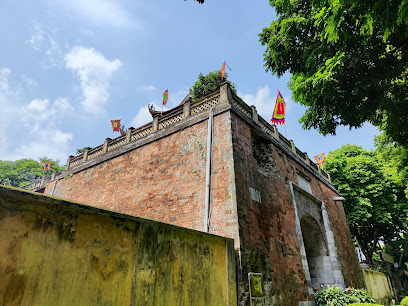
Statue of Lenin
Discover the historical significance of the Statue of Lenin in Hanoi, a captivating symbol of Vietnam's revolutionary past amidst beautiful gardens.

Bac Son Monument
Explore the Bac Son Monument in Hanoi, a symbol of Vietnam's resilience and rich history, surrounded by scenic beauty and cultural heritage.
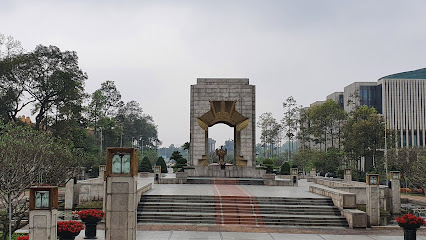
Đình Kim Ngân
Explore Đình Kim Ngân, a serene historical shrine in Hanoi that reflects Vietnam's rich cultural heritage and spiritual traditions.

John McCain Memorial
Explore the John McCain Memorial in Hanoi, a historical landmark honoring the legacy of courage and reconciliation between Vietnam and the United States.

Essential places to dine
Essence Restaurant
Experience the essence of Vietnamese cuisine at Essence Restaurant in Hanoi – where tradition meets innovation in a stunning setting.
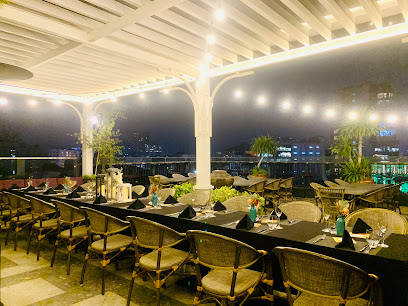
A New Day restaurant
Experience authentic Vietnamese cuisine at A New Day Restaurant in Hanoi – where tradition meets taste in a cozy setting.

Pincho - Tapas Kitchen and Drinks
Experience authentic tapas and exquisite wines at Pincho - Tapas Kitchen and Drinks in Hanoi's vibrant Ba Dinh district.

Khuê Restaurant
Discover Khuê Restaurant in Hanoi - where exquisite French and Vietnamese cuisine meets unparalleled fine dining.

Huế Restaurant
Discover the rich flavors of traditional Vietnamese cuisine at Huế Restaurant in Hanoi – where every dish tells a story.

Old Hanoi Restaurant
Savor the authentic taste of Vietnam at Old Hanoi Restaurant—where tradition meets flavor in every dish.

Vi Ha Noi Restaurant & Cafe
Experience authentic Vietnamese cuisine at Vi Ha Noi Restaurant & Cafe, where tradition meets modernity in a cozy setting.

Fabrik
Discover Fabrik in Hanoi: A delightful fusion of European culinary traditions featuring exquisite French and Mediterranean dishes.

5 Spice Restaurant
Experience authentic Vietnamese cuisine at 5 Spice Restaurant in Hanoi—where traditional flavors meet modern dining.

Trattoria Pomodoro Hanoi
Experience authentic Italian cuisine at Trattoria Pomodoro in Hanoi – where every meal feels like a journey to Italy.
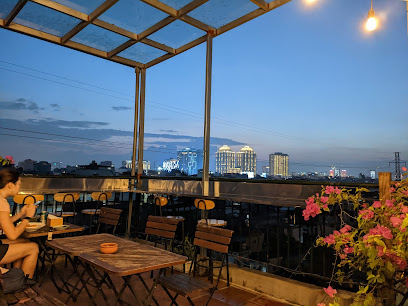
Markets, malls and hidden boutiques
Hanoi Shouten Minimart & Gifts
Explore unique souvenirs and enjoy a cozy coffee break at Hanoi Shouten Minimart & Gifts - a hidden gem in the heart of Hanoi.

Sweet Sandy - Souvenir, Crafts, Art
Explore Sweet Sandy in Hanoi for authentic Vietnamese crafts, art, and unique souvenirs that capture the essence of your travel experience.

Gifts Shop
Explore the vibrant gifts shop in Hanoi, offering unique souvenirs and local crafts that embody the essence of Vietnamese culture.

Creative Gift Shop
Explore the Creative Gift Shop in Hanoi for unique souvenirs, antiques, and delightful gifts that capture the essence of Vietnam.

Cửa Hàng Thời Trang 31 Boutique
Discover unique fashion accessories at Cửa Hàng Thời Trang 31 Boutique, a stylish gem in the heart of Hanoi, Vietnam.

Em Hanoi
Discover the heart of Vietnamese craftsmanship at Em Hanoi, where unique clothing, souvenirs, and local artistry await every traveler.

Dong Ho Painting Sale Shop
Explore the rich cultural tapestry of Vietnam through vibrant Dong Ho paintings at the Dong Ho Painting Sale Shop in Hanoi.

Shopping
Discover Hanoi's vibrant clothing scene in Hoan Kiem, where local fashion meets unique style, creating a shopping experience like no other.

Gift
Explore a unique gift shop filled with local treasures and artisan crafts, perfect for finding memorable souvenirs and gifts during your travels.

Visconti Vietnam
Explore the essence of Vietnamese craftsmanship at Visconti Vietnam, where every gift tells a story of culture and artistry.

Essential bars & hidden hideouts
Polite & Co
Discover Polite & Co, Hanoi's chic cocktail bar where classic elegance meets innovative mixology in a vibrant atmosphere.

Standing Bar
Experience the vibrant ambiance and stunning views at Standing Bar, Hanoi's premier destination for craft beers and delightful bites.
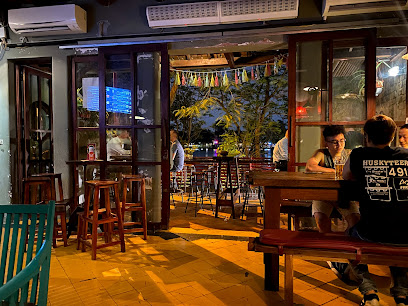
The Unicorn Pub
Experience the vibrant nightlife of Hanoi at The Unicorn Pub, where unique cocktails and a speakeasy vibe create unforgettable moments.
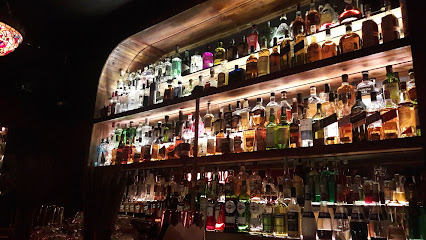
Track 42 Bar
Discover the lively ambiance and exceptional cocktails at Track 42 Bar, a must-visit nightlife destination in the heart of Hanoi.

ZODIAC - Mixology and Wine
Discover the art of mixology at Zodiac, Hanoi’s sophisticated cocktail bar offering exquisite drinks in a stylish ambiance.

Bermuda - Cocktails & Stories
Experience the vibrant nightlife of Hanoi at Bermuda - Cocktails & Stories, where expert mixology meets captivating storytelling.

The Virgin - Wine & Cocktail Bar
Experience Hanoi's nightlife at The Virgin - Wine & Cocktail Bar, a luxurious haven for wine lovers and cocktail enthusiasts seeking exquisite drinks in an elegant setting.

Oneplus Bar Cocktail & Wine
Discover the vibrant nightlife of Hanoi at Oneplus Bar, where expertly crafted cocktails and a chic atmosphere await.
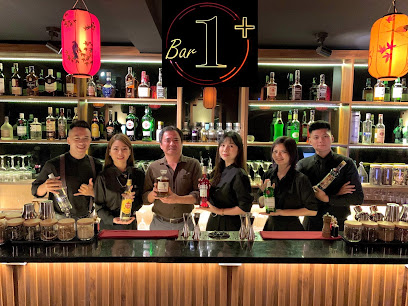
THỞ - Wine Space
Explore a world of exquisite wines in the heart of Hanoi at THỞ - Wine Space, where every sip tells a story.

Theme Lounge
Discover the elegance of Theme Lounge, Hanoi's premier wine bar, where exquisite selections and cozy ambiance await wine lovers.

Local Phrases
-
- HelloXin chào
[Sin chow] - GoodbyeTạm biệt
[Tahm byet] - YesCó
[Koh] - NoKhông
[Khom] - Please/You're welcomeXin vui lòng
[Sin vui long] - Thank youCám ơn
[Kahm uhn] - Excuse me/SorryXin lỗi
[Sin loy] - How are you?Bạn khỏe không?
[Ban khwe khom] - Fine. And you?Khỏe. Còn bạn?
[Khwe. Kohn ban] - Do you speak English?Bạn có nói tiếng Anh không?
[Ban koh noy ting anh khom] - I don't understandTôi không hiểu
[Toy khom hie-oo]
- HelloXin chào
-
- I'd like to see the menu, pleaseTôi muốn xem menu, vui lòng
[Toy muon sem menu, vui long] - I don't eat meatTôi không ăn thịt
[Toy khom an tit] - Cheers!Chúc sức khỏe!
[Chook sook khwe] - I would like to pay, pleaseTôi muốn thanh toán, vui lòng
[Toy muon thanh toan, vui long]
- I'd like to see the menu, pleaseTôi muốn xem menu, vui lòng
-
- Help!Cứu!
[Kyu] - Go away!Đi đi!
[Dee dee] - Call the Police!Gọi cảnh sát!
[Goy cang sat] - Call a doctor!Gọi bác sĩ!
[Goy bok see] - I'm lostTôi lạc đường
[Toy lak doong] - I'm illTôi ốm
[Toy om]
- Help!Cứu!
-
- I'd like to buy...Tôi muốn mua...
[Toy muon mwa] - I'm just lookingTôi chỉ xem
[Toy chi sem] - How much is it?Bao nhiêu tiền?
[Bao nyew tien] - That's too expensiveĐắt quá
[Dat kwa] - Can you lower the price?Bạn có thể giảm giá không?
[Ban koh tay zem zah khom]
- I'd like to buy...Tôi muốn mua...
-
- What time is it?Bây giờ là mấy giờ?
[Bay zow la may zow] - It's one o'clockMột giờ
[Moat zow] - Half past (10)Rưỡi (10)
[Ruoy (10)] - MorningBuổi sáng
[Boo-ee sang] - AfternoonBuổi chiều
[Boo-ee chyoo] - EveningBuổi tối
[Boo-ee toy] - YesterdayHôm qua
[Home kwa] - TodayHôm nay
[Home nigh] - TomorrowNgày mai
[Nyai my] - 1Một
[Moat] - 2Hai
[High] - 3Ba
[Bah] - 4Bốn
[Buhn] - 5Năm
[Nam] - 6Sáu
[Sow] - 7Bảy
[Bye] - 8Tám
[Tahm] - 9Chín
[Cheen] - 10Mười
[Mooey]
- What time is it?Bây giờ là mấy giờ?
-
- Where's a/the...?Ở đâu có...?
[Uh dow koh] - What's the address?Địa chỉ là gì?
[Jee-uh chee la zee] - Can you show me (on the map)?Bạn có thể chỉ cho tôi (trên bản đồ) không?
[Ban koh tay chee cho toy (trun bahn doh) khom] - When's the next (bus)?Khi nào là chuyến xe tiếp theo?
[Khee now la chuyen se tiep the-ow] - A ticket (to ....)Một vé (đi ...)
[Moat vay (dee ...)]
- Where's a/the...?Ở đâu có...?
History of Ba Dinh District
-
Ba Dinh District is famously known as the site of the August Revolution in 1945, which led to the declaration of Vietnam's independence from French colonial rule. On September 2, 1945, Ho Chi Minh read the Declaration of Independence in Ba Dinh Square, marking a pivotal moment in Vietnamese history and solidifying the district's significance as a center of national pride.
-
Ba Dinh District has long been the political hub of Vietnam. It houses the Presidential Palace, where the President of Vietnam resides and conducts official business. The architecture and layout of these governmental buildings reflect the colonial past, intertwined with traditional Vietnamese designs, showcasing the cultural synthesis that characterizes Hanoi.
-
One of the most significant landmarks in Ba Dinh is the Ho Chi Minh Mausoleum, constructed between 1973 and 1975. It serves as the final resting place of Ho Chi Minh, the founder of modern Vietnam. The mausoleum is a testament to the reverence the Vietnamese people have for their revolutionary leader and is a critical site for both locals and tourists, drawing thousands who come to pay their respects.
-
The Doi Moi reforms initiated in 1986 had a profound impact on Ba Dinh District, reflecting Vietnam's transition from a centralized economy to a socialist-oriented market economy. These reforms led to increased foreign investment and a resurgence of cultural activities, revitalizing the district’s traditional markets, arts, and community events.
-
Ba Dinh is home to several war memorials and museums, commemorating Vietnam's tumultuous history, especially the struggles against French colonialism and the Vietnam War. The Vietnam Military History Museum and the various memorials scattered throughout the district serve as poignant reminders of the sacrifices made during these conflicts and play a crucial role in educating visitors about the country's history.
Ba Dinh District Essentials
-
Ba Dinh District is centrally located in Hanoi, making it easily accessible from other neighborhoods. From Hoan Kiem District, you can take a taxi or use ride-hailing apps like Grab, which is a popular choice among locals and tourists alike. Buses are also available, with several routes connecting Hoan Kiem to Ba Dinh. If you are coming from the airport, consider booking a shuttle service or a taxi, as it is about 30 kilometers away and takes approximately 40 minutes to 1 hour, depending on traffic.
-
Ba Dinh District is well-connected by public transportation, including buses and taxis. The bus system is efficient, with multiple routes covering the area. For a more local experience, rent a bicycle and explore at your own pace. Additionally, walking is a great way to navigate through the district, as many attractions are in close proximity to one another.
-
Ba Dinh District is generally safe for tourists, but like any urban area, vigilance is advised. Petty crimes such as pickpocketing can occur, especially in crowded locations like markets or tourist sites. It is advisable to avoid areas that appear deserted at night and to keep your belongings secure. Specific areas to be cautious around include the outskirts of the district where less foot traffic is present.
-
In case of an emergency, dial 113 for police, 114 for fire, and 115 for medical assistance. It is advisable to keep a list of local emergency contacts handy, including your embassy. For minor health issues, several pharmacies are available throughout the district, where you can find over-the-counter medications.
-
Fashion: Do wear comfortable clothing suitable for the weather, and dress modestly when visiting temples. Don’t wear revealing clothing, especially in religious sites. Religion: Do show respect by removing your shoes when entering temples and covering your shoulders. Don’t engage in loud conversations in sacred spaces. Public Transport: Do be polite and offer your seat to the elderly. Don’t eat or drink on public transport. Greetings: Do greet locals with a smile and a nod. Don’t use overly casual greetings, as it may be seen as disrespectful. Eating & Drinking: Do try local dishes and accept invitations to share meals. Don’t waste food or refuse offerings, as this can be considered rude.
-
To experience Ba Dinh District like a local, visit the local markets, such as the Dong Xa Market, where you can find fresh produce and traditional snacks. Engage with vendors and locals to learn more about Vietnamese culture. Don’t miss the opportunity to visit the Ho Chi Minh Mausoleum and the One Pillar Pagoda, both iconic landmarks. For a unique experience, try street food from local vendors; just ensure you choose busy stalls, which are usually a sign of freshness and quality.
Nearby Cities to Ba Dinh District
-
Things To Do in Ha Long
-
Things To Do in Sapa
-
Things To Do in Xieng Khouang
-
Things To Do in Phonsavan
-
Things To Do in Luang Prabang
-
Things To Do in Thakhek
-
Things To Do in Vang Vieng
-
Things To Do in Vientiane
-
Things To Do in Muang Sing
-
Things To Do in Savannakhet
-
Things To Do in Udon Thani
-
Things To Do in Hue
-
Things To Do in Nan
-
Things To Do in Loei
-
Things To Do in Da Nang











